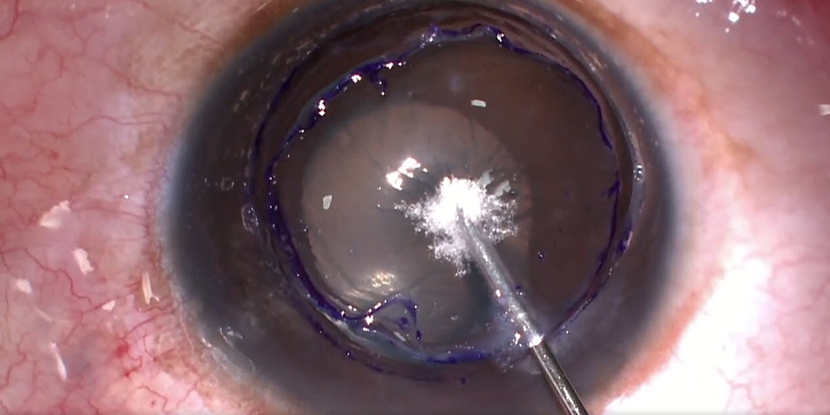Pellucid Marginal Degeneration (PMD) is a chronic, slowly progressing condition that causes peripheral corneal thinning. It is crucial to recognise this because it may result in a serious decline in visual function. Additionally, refractive surgery patients with PMD may experience negative outcomes, thus this is something to take into account before having the procedure.
Despite its rarity, PMD is, after keratoconus, the most frequent non-inflammatory corneal thinning condition. However, some people speculate that because the ailment is frequently misdiagnosed as keratoconus, this incidence may really be understated. It is hypothesised that keratoconus, keratoglobus, and PMD are connected because they coexist in families. Keratoconus and keratoglobus are both linked to 10% and 13% of cases of PMD, respectively. In a series carried out in Japan, keratoconus or probable keratoconus was found in the co-existing eye in 17 of 27 cases of unilateral PMD. The distinction between keratoconus, keratoglobus, and PMD as well as their phenotypic variants remain unclear.
Between the second and fifth decade of life is when PMD commonly manifests. Although PMD has no sex or racial preference and does not appear to be genetic, families with affected patients have been found to have moderate to high astigmatism. A recent instance shown that PMD and corneal plana coexisted in a person who had a KERA mutation, perhaps involving KERA in the emergence of PMD.
There are no proven methods to prevent PMD. Given the corneal thinness, the potential link between PMD and eye rubbing and keratoconus, it could be wise to urge patients not to rub their eyes.
The term “pellucid,” which means “transparent,” was coined to describe a degeneration in which the cornea frequently appears translucent. With the exception of gradual visual degeneration, patients are mostly asymptomatic, hence the diagnosis is made clinically.
PMD signs include thinner than normal cornea, severely decreased uncorrected visual acuity that in most cases, spherocylinder lenses cannot improve, practically average pinhole vision and Refraction and keratometry demonstrating astigmatism that violates the rule.
Patients often describe a gradual loss of eyesight that is not repaired by glasses.
PMD complications can happen, however they are less common than keratoconus. Vertical stress lines and acute hydrops are two complications that can happen, albeit they are very uncommon. Additionally, spontaneous corneal perforation has been documented. The cornea can become vascularized and scarred, but usually the cornea is clean and does not have neovascularization or lipid accumulation. Both Descemet’s folds and posterior stromal scarring are possible.
At The Eye Center- Dr. Mahnaz Naveed Shah & Associates our team of eight ophthalmology subspecialists/ eye specialists, eye surgeons who are considered amongst the very best eye specialists in Karachi and in Pakistan, have the diagnostic and treatment capabilities to treat from the simplest to the most complex patients. We work hard to provide our patients with the best possible medical and surgical eye care, in a state of the art purpose built eye care facility. We offer the entire array of medical, laser and surgical treatments to help provide patients the best possible care in the most efficient, safe and ethical manner.
If you need an appointment, please contact us at 03041119544 during our working hours or leave us a WhatsApp message at +923028291799 and someone will connect with you. Walk-in appointments are also available for emergencies. We can also be reached through our web portal on www.surgicaleyecenter.org

